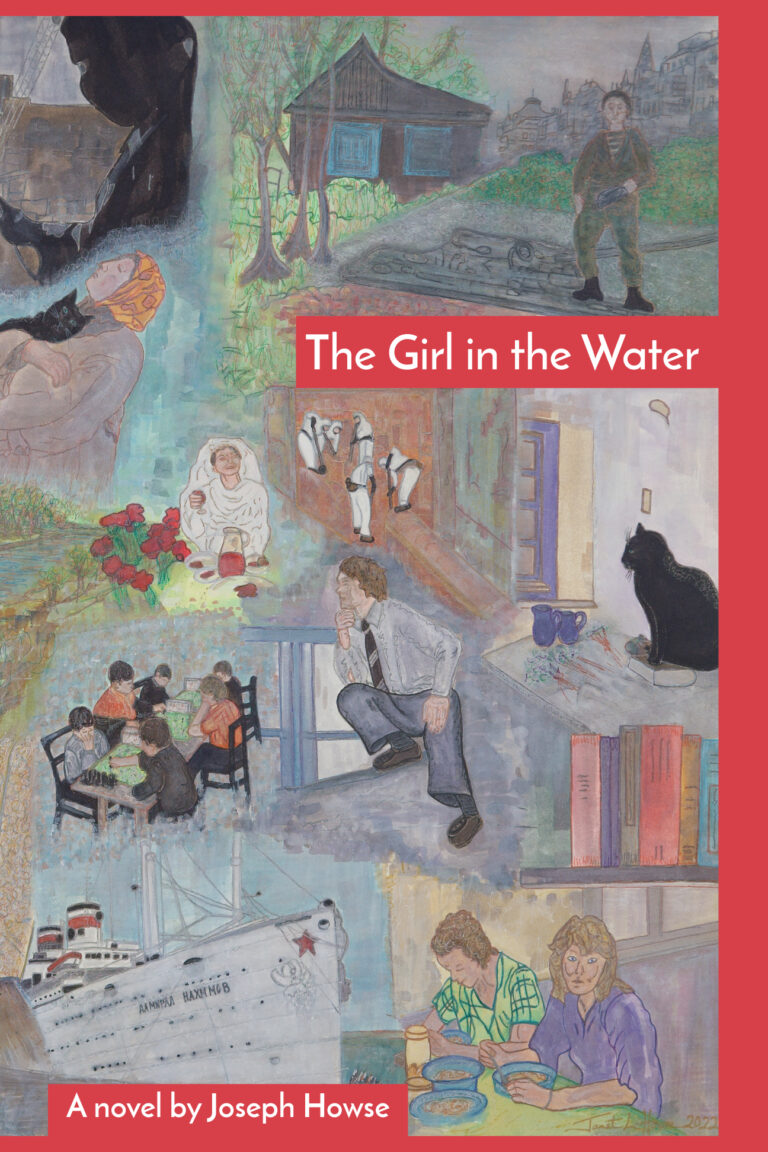Big, sweeping, and heavily influenced by the works of Russian greats Leo Tolstoy and Fyodor Dostoevsky, Joseph Howse’s THE GIRL IN THE WATER follows Nadia’s journey through 1980s Russia. Major world events–the nuclear meltdown at Chornobyl and the Russian/Afghan war occur in the background in this novel of quiet moments–glances between newlyweds, a poked campfire roaring to life, the curious play of a kitten. The most demonstrative emotional outburst is when fugitive love interest Johnny beats his jacket against a wall. These characters are repressed and buttoned up, resulting from generations living under a repressive, bureaucrat-heavy government. Paperwork, procedures, rules, and regulations are an immovable backdrop that contrasts the turbulent emotions of the novel’s characters.
References to Russian literature are innumerable in the story. A character who gathers and dispenses information is named Murat, like the title character of Tolstoy’s spy novella Hadji Murat. Several pivotal scenes occur on trains or train stations, like Anna Karenina. As with Tolstoy’s work, THE GIRL IN THE WATER contrasts forward-thinking city life with tradition-based rural living. Howse’s novel feels Russian, from its ornate structure to its social commentary to its wry humor. The author has composed a book like Tchaikovsky would a symphony; tight, disciplined, yet bubbling with unspoken passion and near-magical allegory. The story is also oddly prescient. As a war between Russia and Ukraine unfolds, THE GIRL IN THE WATER looks back at a not-so-distant time when Ukraine was still under the wing of the Motherland. Ida, Nadia’s best friend, is viewed as a weirdo because she enjoys the emerging field of computer science and wireless communications. She might still be seen as a weirdo today, but she’d have a high-paying job and better street cred. Ida suffers from being ahead of her time.
Howse is a gifted storyteller and he makes a bold stylistic choice by mirroring the same languid pacing as classic Russian tomes. THE GIRL IN THE WATER is the opposite of an action thriller; it’s a (very) slowly unfolding character study. Howse asks readers raised in an age of short attention spans to commit to more leisurely, reflective storytelling. Those that do are in for an enchanted visit to the final days of the Soviet Union.
Joseph Howse evokes the literary styles of Tolstoy and Dostoevsky in THE GIRL IN THE WATER, a sprawling, complex and compelling tale of a young Ukrainian girl in the late 1980s at a personal and cultural crossroads.
~Rob Errera for IndieReader


